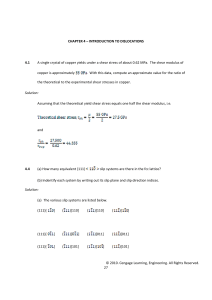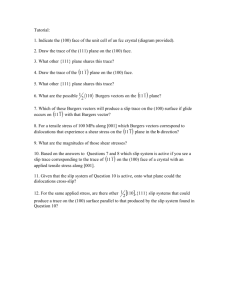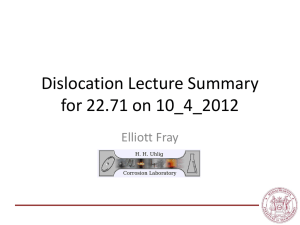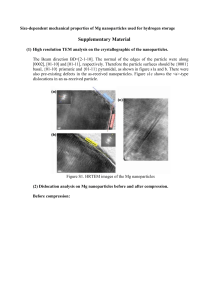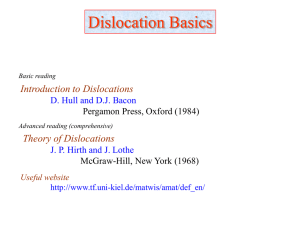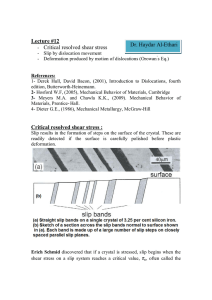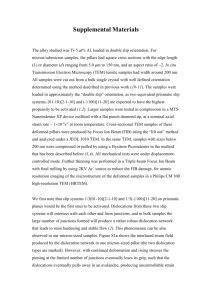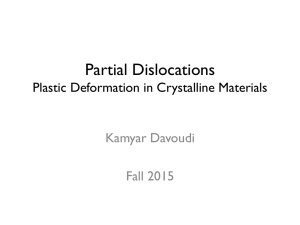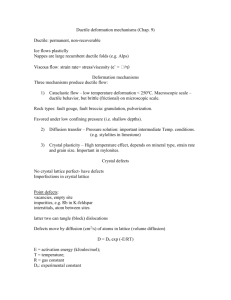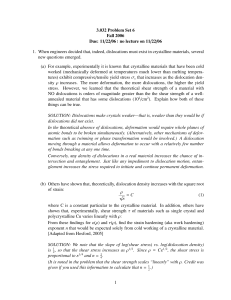CHAPTER 1
advertisement
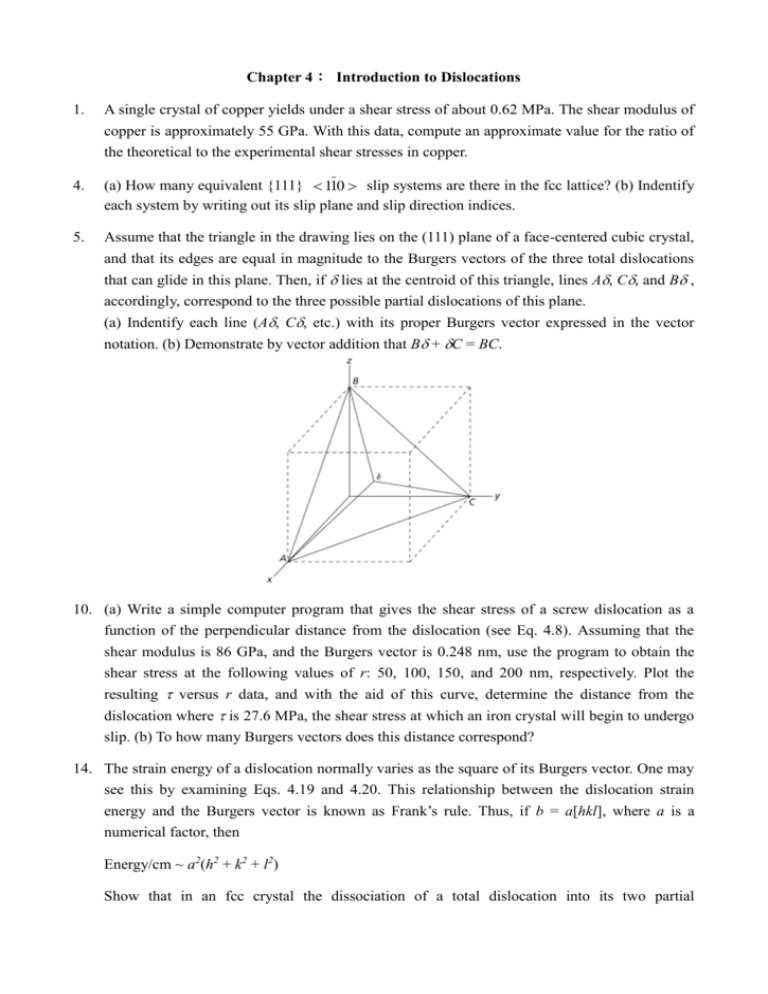
Chapter 4: Introduction to Dislocations
1.
A single crystal of copper yields under a shear stress of about 0.62 MPa. The shear modulus of
copper is approximately 55 GPa. With this data, compute an approximate value for the ratio of
the theoretical to the experimental shear stresses in copper.
4.
(a) How many equivalent {111} 110 slip systems are there in the fcc lattice? (b) Indentify
each system by writing out its slip plane and slip direction indices.
5.
Assume that the triangle in the drawing lies on the (111) plane of a face-centered cubic crystal,
and that its edges are equal in magnitude to the Burgers vectors of the three total dislocations
that can glide in this plane. Then, if lies at the centroid of this triangle, lines A, C, and B ,
accordingly, correspond to the three possible partial dislocations of this plane.
(a) Indentify each line (A, C, etc.) with its proper Burgers vector expressed in the vector
notation. (b) Demonstrate by vector addition that B + C = BC.
10. (a) Write a simple computer program that gives the shear stress of a screw dislocation as a
function of the perpendicular distance from the dislocation (see Eq. 4.8). Assuming that the
shear modulus is 86 GPa, and the Burgers vector is 0.248 nm, use the program to obtain the
shear stress at the following values of r: 50, 100, 150, and 200 nm, respectively. Plot the
resulting versus r data, and with the aid of this curve, determine the distance from the
dislocation where is 27.6 MPa, the shear stress at which an iron crystal will begin to undergo
slip. (b) To how many Burgers vectors does this distance correspond?
14. The strain energy of a dislocation normally varies as the square of its Burgers vector. One may
see this by examining Eqs. 4.19 and 4.20. This relationship between the dislocation strain
energy and the Burgers vector is known as Frank’s rule. Thus, if b = a[hkl], where a is a
numerical factor, then
Energy/cm ~ a2(h2 + k2 + l2)
Show that in an fcc crystal the dissociation of a total dislocation into its two partial
dislocations is energetically feasible. See Eq. 4.4 (
1
1
1
110 121 211 ).
2
6
6
15. The c/a ratio of the hcp zinc crystal is 1.866. Determine the ratio of the strain energy of a
dislocation with a
1
1123 Burgers vector, to that of a basal slip dislocation.
3
